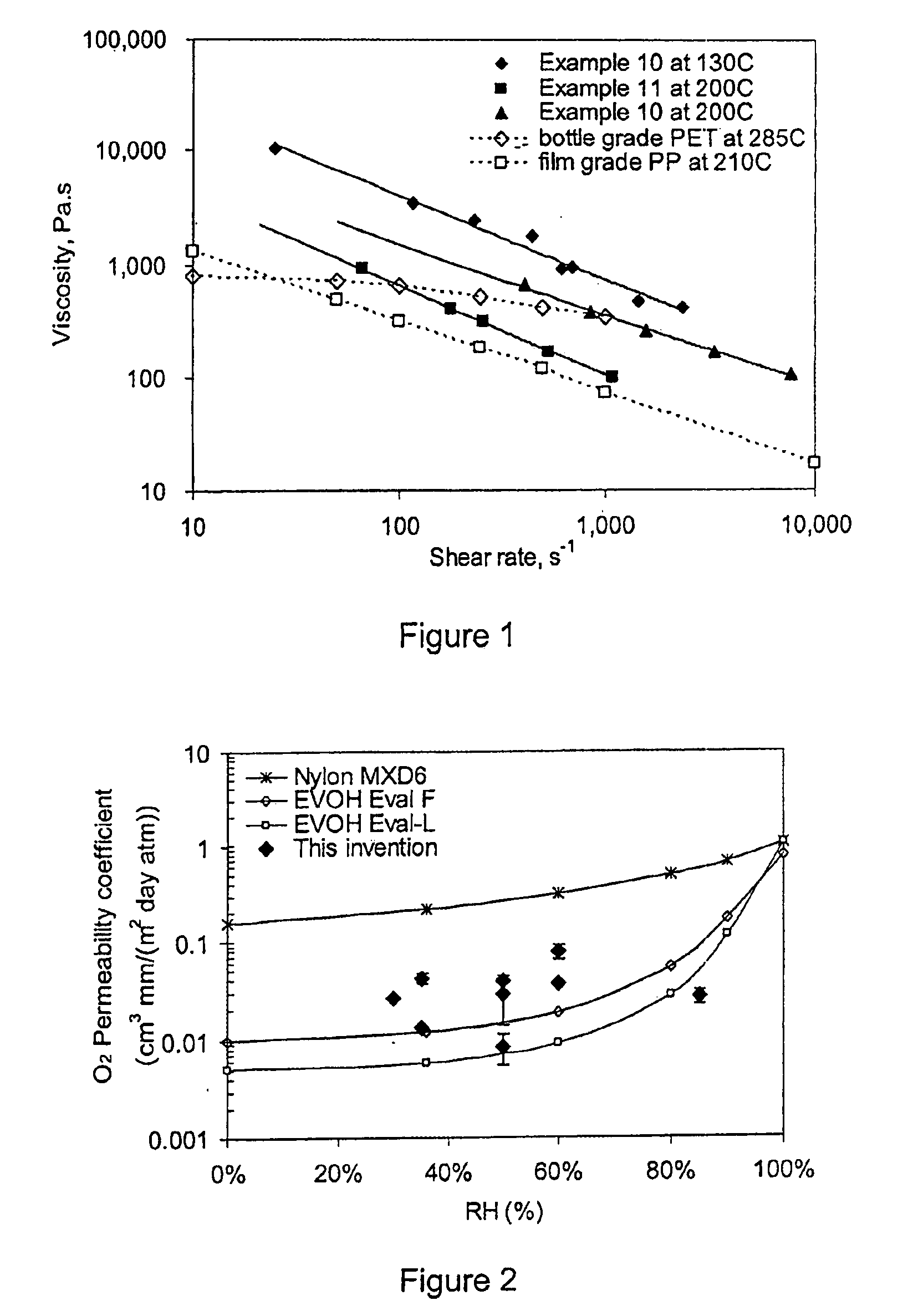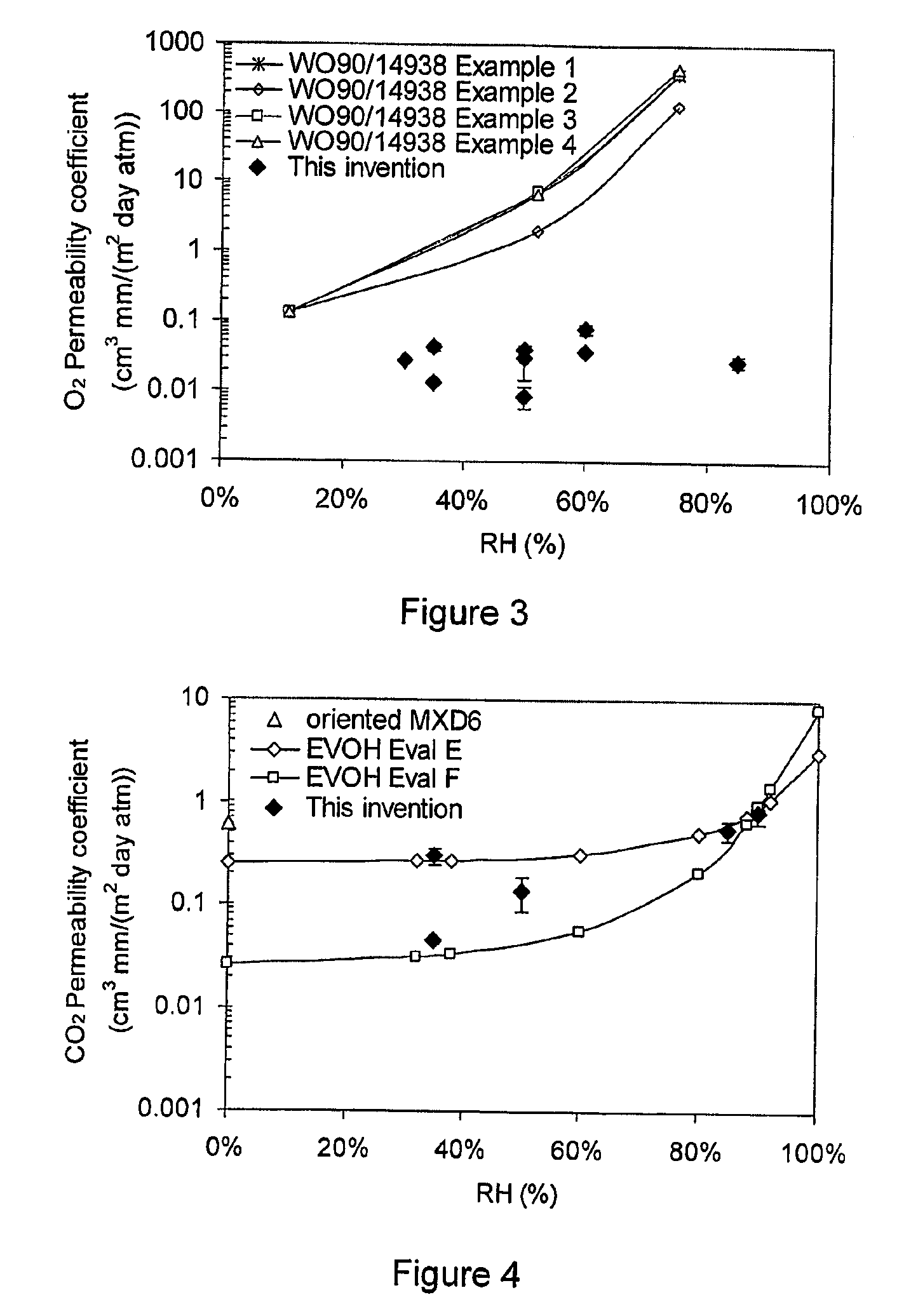Barrier film
a barrier film and film technology, applied in the field of barrier film, can solve the problems of spoilage in food and drink, poor stopping of gas transfer into and out of packaged food, and significant challenge in keeping food and drink fresh, so as to increase the homogeneity of the blend, stabilize mechanical properties, and stabilize the effect of mechanical properties
- Summary
- Abstract
- Description
- Claims
- Application Information
AI Technical Summary
Benefits of technology
Problems solved by technology
Method used
Image
Examples
example 1
[0067]A formulation consisting of 48.3% hydroxypropylated high-amylose corn starch, 27.4% sorbitol, 9.6% polyvinyl alcohol, 7.7% maltitol, 5.1% glycerol, 1% GMS, 0.6% stearic acid, 0.3% sodium stearoyl lactylate.
example 2
[0068]A formulation consisting of 64.1% hydroxypropylated high-amylose corn starch, 12.8% polyvinyl alcohol, 11.7% sorbitol, 5% glycerol, 3.3% maltitol, 1% GMS, 0.8% stearic acid, 0.3% sodium stearoyl lactylate.
example 3
[0069]A formulation consisting of 52.0% hydroxypropylated high-amylose corn starch, 35.1% glycerol, 11.0% polyvinyl alcohol, 1% GMS, 0.7% stearic acid, 0.3% sodium stearoyl lactylate.
PUM
| Property | Measurement | Unit |
|---|---|---|
| Momentum | aaaaa | aaaaa |
| Momentum | aaaaa | aaaaa |
| Momentum | aaaaa | aaaaa |
Abstract
Description
Claims
Application Information
 Login to View More
Login to View More - R&D
- Intellectual Property
- Life Sciences
- Materials
- Tech Scout
- Unparalleled Data Quality
- Higher Quality Content
- 60% Fewer Hallucinations
Browse by: Latest US Patents, China's latest patents, Technical Efficacy Thesaurus, Application Domain, Technology Topic, Popular Technical Reports.
© 2025 PatSnap. All rights reserved.Legal|Privacy policy|Modern Slavery Act Transparency Statement|Sitemap|About US| Contact US: help@patsnap.com


